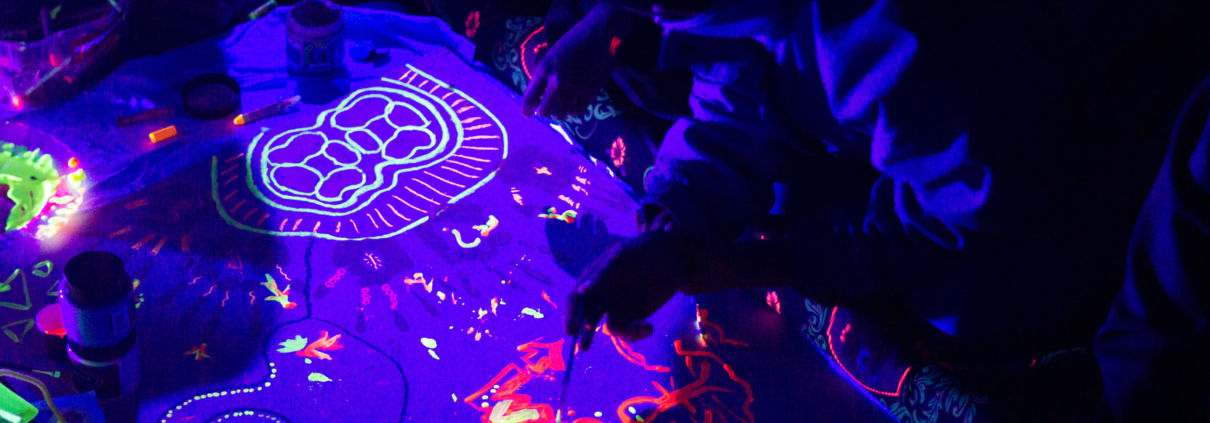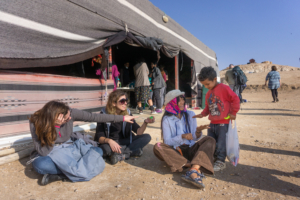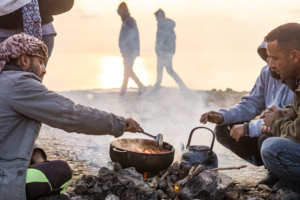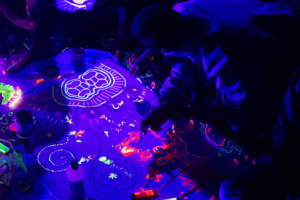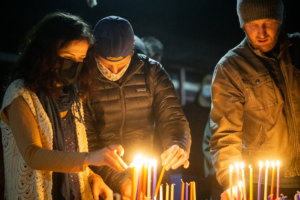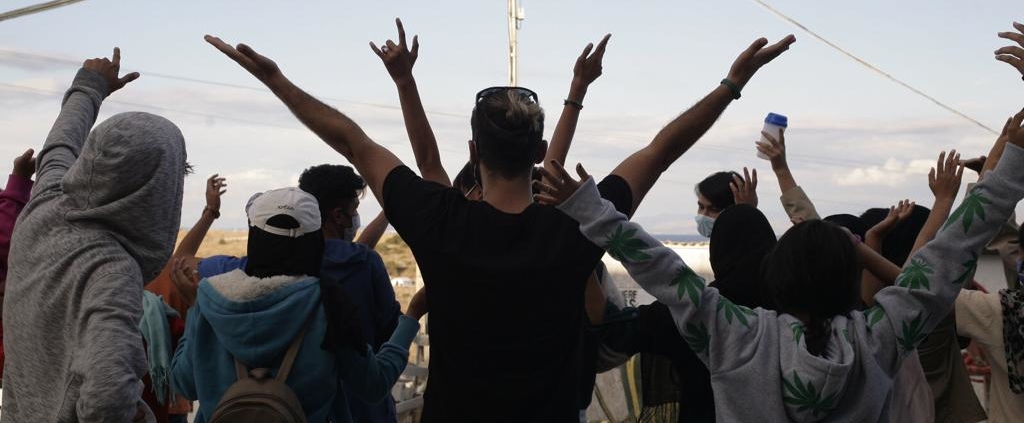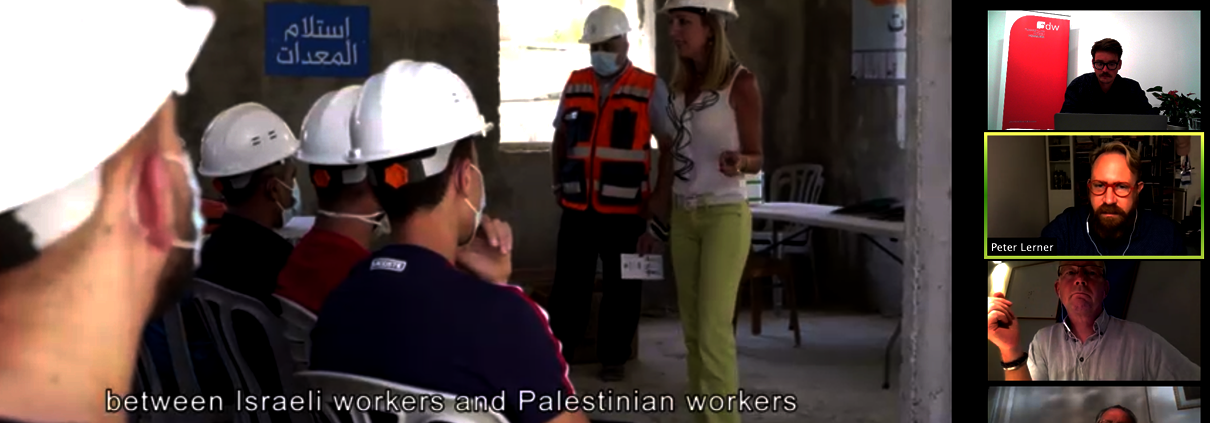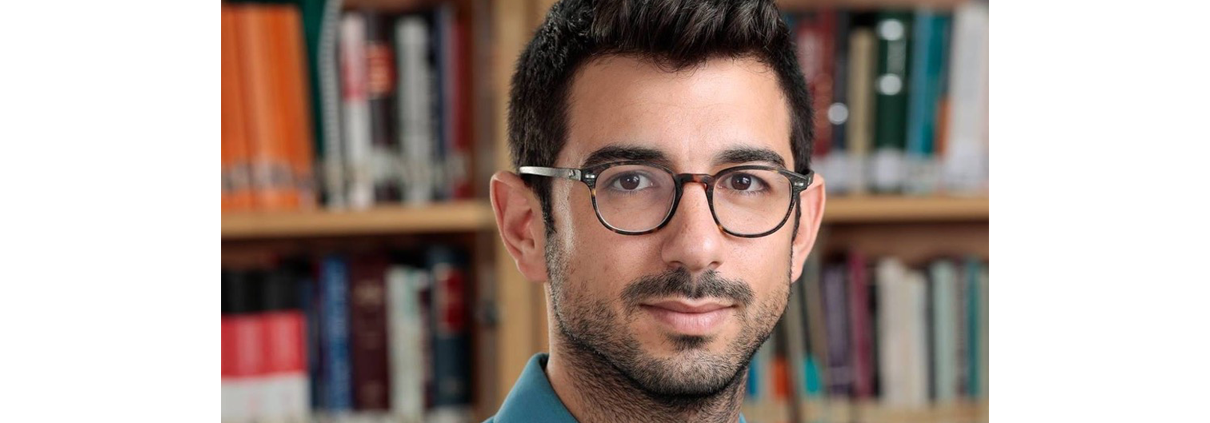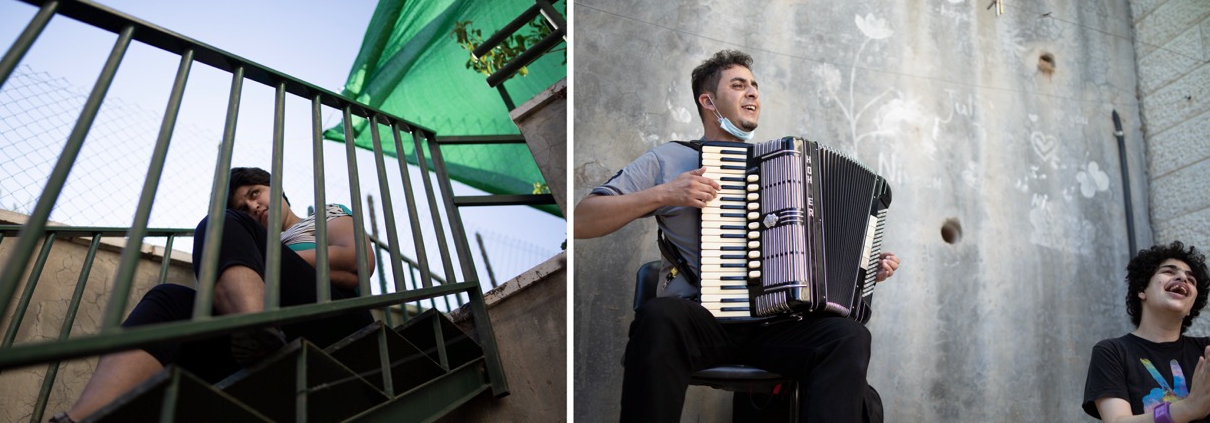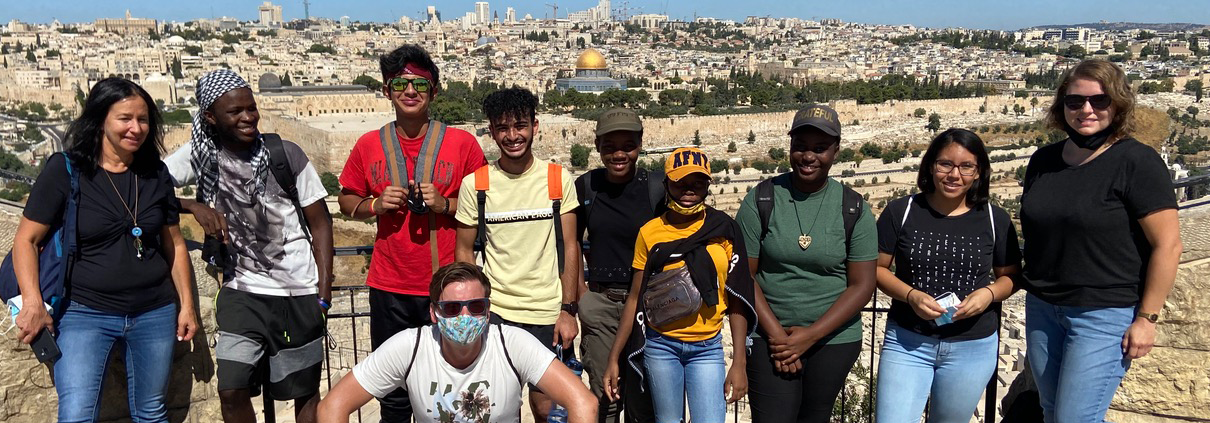50 Jahre Kniefall von Warschau: Interview mit Nitzan Menagem
Am 7. Dezember 1970 kniete Willy Brandt am Ehrenmal für die Toten des Warschauer Ghettos nieder. Schweigend verharrte der deutsche Kanzler eine halbe Minute und drückte so seine Bitte um Vergebung für die deutschen Verbrechen des Zweiten Weltkriegs aus. Später erklärte Brandt:
„Wo, wenn nicht dort, wo das Warschauer Ghetto stand, wäre für einen deutschen Bundeskanzler der Platz, die Last der Verantwortung zu spüren und Schuld abzutragen!“
Die Erinnerung an den millionenfachen Mord an den Juden Europas präge besonders die deutsch-israelischen Beziehungen, so Brandt. Niemand dürfe das Lebensrecht des Staates Israels in Frage stellen.
2020 jährt sich Willy Brandts Kniefall zum 50. Mal. Anlass für uns eine israelische Partnerin von Hashomer Hatzair nach der Bedeutung der Geste und ihrer Relevanz heute zu fragen.
Zum 50. Mal jährt sich Willy Brandts Kniefall von Warschau und seine Bitte um Vergebung deutscher Verbrechen an Jüdinnen und Juden. Was bedeutet der Kniefall für dich?
Willy Brandts Kniefall hat eine große Symbolik. Brandt war selbst Antifaschist, der als Widerstandskämpfer aus Nazi-Deutschland fliehen musste. Er machte diese Geste, um zu zeigen, dass er als Kanzler der Bundesrepublik Deutschland Verantwortung übernimmt. Und das obwohl er selbst keine Schuld auf sich geladen hatte. Nach jahrelangen Begegnungen mit Gruppen antifaschistischer Aktivist*innen von Jusos und den Falken verstehe ich, wie wichtig es ist, einen solchen Standpunkt einzunehmen: Es geht nicht um Schuld, sondern um Verantwortung. Furchtlos daran zu arbeiten, dass so etwas nie wieder passiert, niemandem. Brandt hat das Verantwortungsvolle getan, indem er niederkniete. Nicht nur, um sein Bedauern und seine Trauer über diese schrecklichste Tragödie der modernen Zeit zu zeigen, sondern auch, um zu sagen: wir sind verantwortlich und wir werden alles in unserer Macht Stehende tun, um anders zu handeln. Brandt hat die Verantwortung übernommen, die aus den Gräueltaten der Nationalsozialisten folgte.
Du arbeitest für Hashomer Hatzair Deutschland. Was ist das für eine Organisation und was hat Hashomer Hatzair mit dem Warschauer Ghetto zu tun?
Hashomer Hatzair Deutschland wurde 2012 nach 74 Jahren wieder gegründet. Wir sind eine säkulare, aber dennoch jüdische Jugendbewegung, die Teil einer internationalen, sozialistischen und feministischen Organisation ist. Wir arbeiten daran, die pluralistische Gemeinschaft als Gruppe zu verbinden und zu stärken, für die Anerkennung des Judentums als eine gemeinsame Kultur und Geschichte. Die Jugendbewegung wurde 1913 in Galizien (Polen) gegründet und hatte vor dem Zweiten Weltkrieg weltweit 70.000 Mitglieder. Vor dem Holocaust war Ken Warschau, der Ortsverband von Hashomer Hatzair in Warschau, der größte weltweit.
Als ich in meiner Jugend über den Holocaust lernte, wurde Warschau immer als ein besonderer Ort diskutiert. Hier fand 1943 der Aufstand im Warschauer Ghetto statt. Mordechaj Anielewicz, der Leiter des Warschauer Ortverbands von Hashomer Hatzair, wurde Leiter der jüdischen Widerstandsorganisation und einer der Anführer des Aufstands. Zusammen mit weiteren Mitgliedern von Hashomer Hatzair, wie Tosia Altman. Im Rückblick auf den Schrecken jener Zeit, auf die Lage, in der sich die Jüdinnen und Juden und andere Opfer der Nazis befanden, war diese Art von Widerstand alles andere als selbstverständlich. Man brauchte Verbündete, mit denen man kooperieren konne und Menschen, die bereit waren ein Risiko auf sich zu nehmen und nicht nur passiv zuschauten. Man musste „tapfer und mutig“ sein, aber man musste auch verstehen, dass es keinen anderen Weg gibt. „Tapfer und mutig“ ist bis heute das Motto unserer Organisation.
Ich bin stolz darauf, zusammen mit meinen Genoss*innen in die Fußstapfen vieler mutiger Menschen unserer Bewegung zu treten – ausgerechnet in Deutschland. Polen war vor dem Krieg der Ort, an dem unsere Bewegung am größten war. Heute kämpft Hashomer Hatzair dort mit der immer kleine werdenden jüdischen Gemeinde. Aber auch mit der Zunahme von Rechtsextremismus und Antisemitismus.
Wir sind entschlossen, dem Beispiel unser Mitglieder in der Vergangenheit zu folgen und den Faschismus zu bekämpfen, wo immer er auftaucht: Es geht nicht nur darum, dass der Antisemitismus überall dort aufsteigt, wo Rechtsextremismus erlaubt ist – es geht um die Freiheit eines jeden einzelnen und darum, die Freiheiten die wie jetzt haben zu reflektieren.
Hashomer Hatzair ist auch eine der Partnerorganisationen des Willy Brandt Center Jerusalem (WBC). Was bedeutet für dich die Verbindung von Hashomer Hatzair, WBC und Willy Brandt?
Willy Brandt glaubte an Frieden und es ist kein Zufall, dass das Projekt in Jerusalem nach ihm benannt wurde. Seit 1996 ist das Willy Brandt Center Jerusalem ein wichtiges Projekt, das israelischen und palästinensischen Aktivist*Innen die Möglichkeit gibt, sich zu treffen und auszutauschen. Für alle Menschen, die vor Ort für den Frieden kämpfen, ist dieser Konflikt und alle seine Auswirkungen ermüdend und oft kann man die Hoffnung verlieren und ausbrennen. Aus meiner Erfahrung versteht man nur durch die Begegnung mit „der anderen Seite“ wirklich, dass letztendlich jede*r das Gleiche will: in Frieden zu leben. Nur so kann man die Hoffnung zurückgewinnen und verstehen, dass man ein Teil eines größeren Kampfes ist. Bei gemeinsamen Treffen kommen Menschen nicht zufällig zusammen. Es treffen sich jene, die gemeinsame Werte teilen und unermüdlich daran arbeiten, unsere Gesellschaften und Realitäten besser zu machen. Sowohl mit pädagogischen, als auch mit politischen Mitteln. Auch wenn der Name etwas anderes impliziert, geht es bei diesem Projekt nicht um die Wünsche der deutschen Partner*innen. Sie sind da, um diesen Dialog zu ermöglichen. Es geht darum, die Menschen einfach miteinander sprechen zu lassen, einander verstehen zu lassen, wie sie es ständig tun wollen und gemeinsam an einer andere Realität zu arbeiten. Wie Willy sagte: wir wollen mehr Demokratie wagen – auch im Nahen Osten.
„Wandel durch Annäherung“, war das Motto von Willy Brandts Ostpolitik, die durch den Kniefall von Warschau eine neue Grundlage bekommen hat. Wandel durch Annäherung ist auch ein Arbeitsansatz des WBCs. Können wir heute noch von den Ansätzen Willy Brandts lernen?
Natürlich können wir das. Ich bin eine Anhängerin der Bildungsarbeit, die die harten Fragen über die Gesellschaft stellt, in der wir leben. Warum die Dinge so funktionieren, wie sie funktionieren, warum es überhaupt noch Konflikte gibt. Symbolische Handlungen waren nie genug, um die Realität zu verändern, aber kritische Bildungsarbeit schon.
Du kommst aus Israel und hast dort lange mit und im WBC gearbeitet. Welchen Rolle spielt Willy Brandt für deine Arbeit dort?
Willy Brandt ist für mich in erster Linie mit dem WBC und seinen Werten verbunden. Ich lernte Willy Brandt und seine Ansätze, durch die gemeinsame Arbeit dort kennen. Als junge Aktivistin in Jerusalem wurde ich 2008 im WBC aktiv. Seitdem bin ich an der Arbeit zur Beendigung des israelisch-palästinensischen Konflikts beteiligt. Zu Beginn hatte ich aber nicht die Gelegenheit, jemanden von „der anderen Seite“ kennen zu lernen. Internationals können sich zwischen Israel und Palästina relativ frei bewegen. Aber die Menschen, die dort leben nicht. Erst als ich nach Jerusalem zog und im WBC aktiv wurde, hatte ich die Chance, diesen politischen Dialog zu führen. Wir hatten nicht vor, Freund*innen zu werden, aber der Respekt, die gegenseitige Anerkennung und das Verständnis erlaubten es uns, Erfahrungen auszutauschen und uns gegenseitig zu unterstützen. Seltsamerweise war es einfacher, sich in Deutschland als in der Region zu treffen. Unsere deutschen Partner*innen haben besondere historische Beziehungen und ein großes Interesse an Israel. Aber diese besonderen Beziehungen ermöglichen auch einen wirklich einzigartigen Austausch zwischen Aktivist*innen, von dem alle Parteien – Israelis, Palästinenser*innen und Deutsche – gleichermaßen viel lernen könnten. Über Frieden, Demokratie und darüber, was unseren Realitäten noch von diesen Zielen trennt.
Zur Person:
Nitzan Menagem ist Vorsitzende von Hashomer Hatzair Deutschland. Seit 2008 ist Nitzan am Friedensprojekt Willy Brandt Center Jerusalem beteiligt, wo sie als Projektkoordinatorin im politischen Team und später im Kommunikations- und Projektmanagement in Berlin tätig war. Sie arbeitet als Projektleiterin, Referentin und Trainerin freiberuflich bei verschiedenen Organisationen.
Interview von Onno Mengdehl und Tobias Pietsch
Foto: Sven Simon

